The Impact of Deforestation on the Water Cycle
The worldwide forests of the planet are shrinking. At its most basic, all this clears the way for human activities. Activities included in this can be like supplying wood for construction, agriculture, constructing urban areas, and other means of sustenance. There are many environmental issues that may happen, such as biodiversity, climate change, and the water cycle— all closely tied to how deforestation affect the water cycle.
The deforestation affect the water cycle in ways often overlooked, disturbing the natural systems that sustain life. We are cutting down forests on a large scale, deliberately or otherwise, called forest clearance. Decreasing trees raises the velocity of carbon from the atmosphere, knowing that it passes through the hydrological cycle.
Table of Contents
Studies have shown that 80% of trees must be intact for Amazon forests to sustain this vital water cycle. But now, Amazon is on the brink, with about 81% of the forest remaining. Water vapor is abundant in the air; if there are sufficient trees, they will regulate this water vapor in harmony with the hydrological cycle.
The Water Cycle
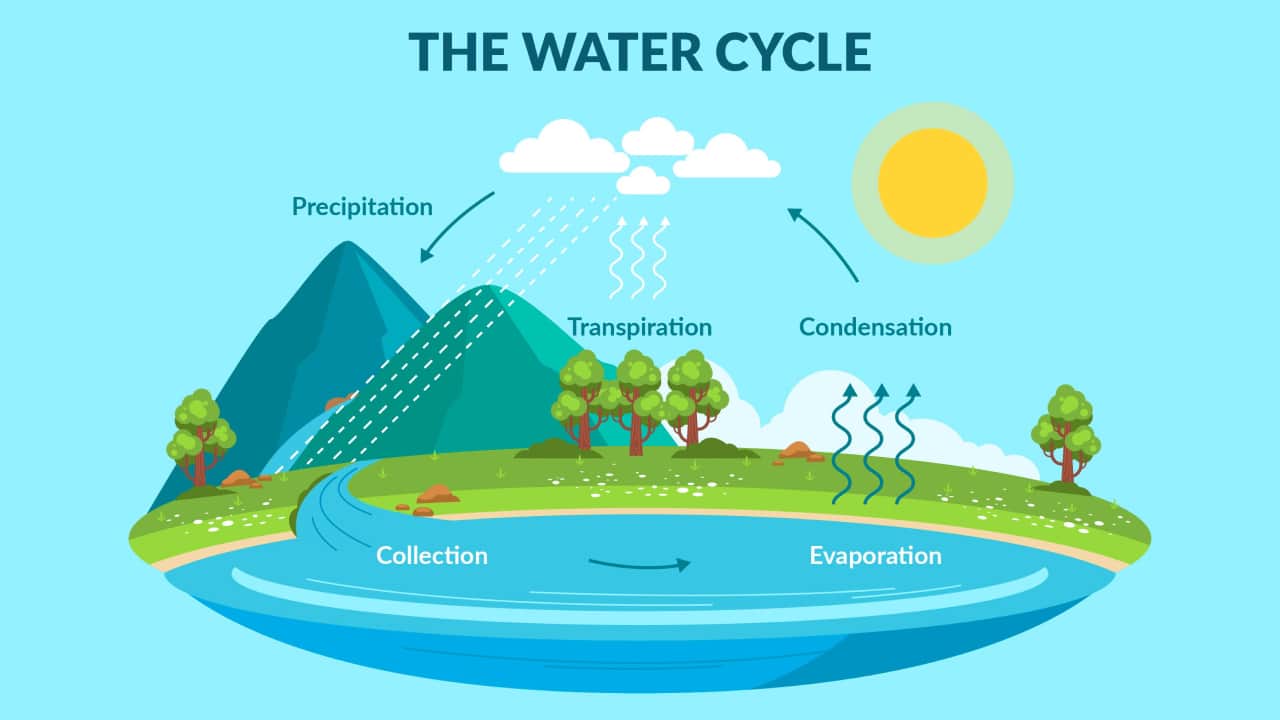
Water moves from water bodies to air and then again from air to soil. The water circulates in the atmosphere in the processes of transpiration, condensation, evaporation, and precipitation. Water is in constant motion between the Earth and the atmosphere. We used these processes to spread it in various areas with functioning and also offer the recycling of water.
Evaporation is the process in which water from the water bodies changes into water vapor and goes into the atmosphere. The plants and trees suck water from the soil, and they release it in the form of water vapor into the atmosphere through leaves. It is usually known as ‘transpiration.’ This process, in particular, adds to atmospheric moisture. Then, these vapors rise to the sky, and the tiny particles merge to form clouds. This denser air then sinks as part of a process called ‘condensation.’ It is mainly used for distributing water. When the water droplets are in this cloud, they become heavy enough and fall to the ground as rain, hail, or snow. This is called ‘precipitation’.
It is crucial for freshwater supplies. This hydrology cycle is important as it provides water for all organisms. Only 3% of Earth’s total water is fresh; the other 97% is not usable. It is the water cycle that circulates and brings fresh water to every organism on Earth.
Forests and Their Role in the Hydrologic Cycle
Transpiration is critical for moisture formation in the air, as all water vapors accumulate after transpiration in the upper part of the atmosphere. In some parts, these vapors are responsible for registering regional rainfall patterns. One tree can transpire about 100 gallons of water a day from the soil to the atmosphere, the research explained. The only source that is larger than that is transpiring at about 20 billion of them per day, and that source is the Amazon rainforest.
Forest canopies capture the rainwater, which has a direct impact on the soil. Forests are thus good at preventing soil erosion and allowing the soil to absorb water slowly. Forests can also facilitate the storage of rainwater in the ground. And replenish the aquifers and keep rivers and lakes flowing through the dry season. The systems of tree roots filter out the harmful nutrients from the water and keep them away from the nearby water bodies.
Forest land serves as a natural filter; the forest’s soil absorbs toxins, such as phosphorus and nitrogen, from the water so that this toxic water becomes fresh water derived from the soil. Climate regulation is one of the principal functions of forests. It also modulates the water temperature since a high amount of data evaporates at high temperatures, and it can cause diaspora in the hydrologic cycle. Aquatic ecosystems might be threatened by the rise in water temperature.
How Does Deforestation Affect The Water Cycle?
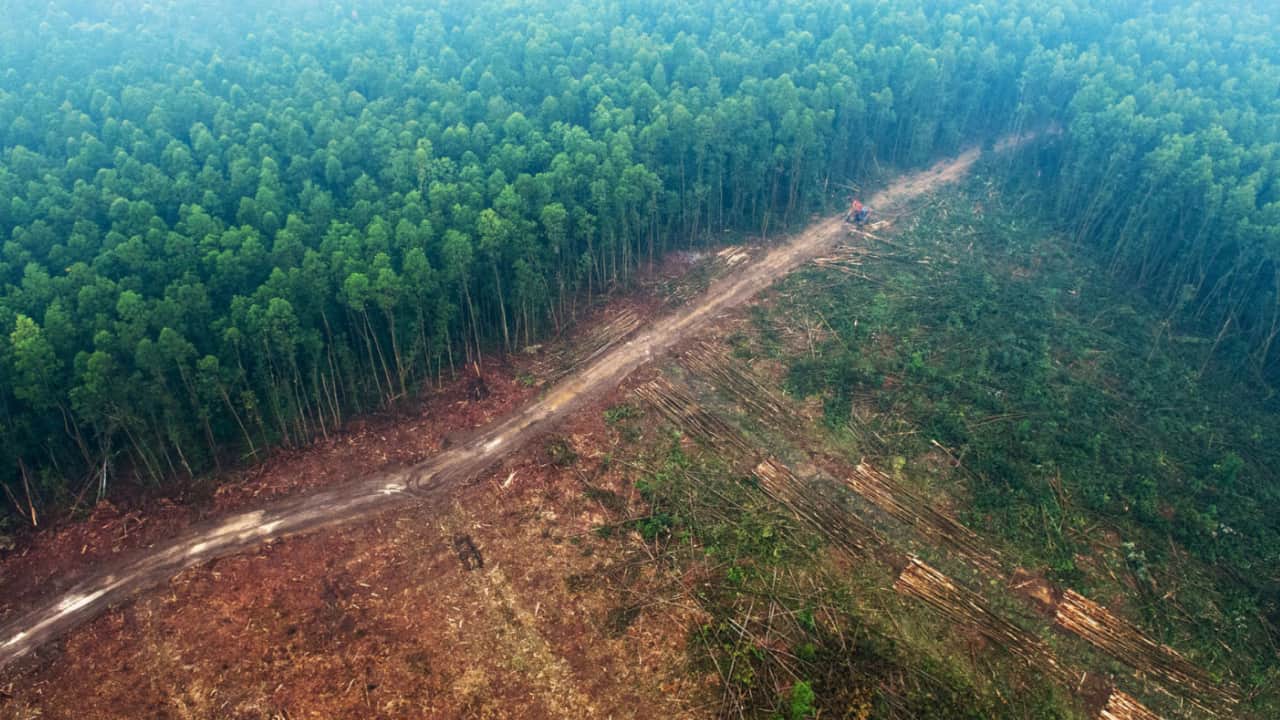
The forest loss is considered to have huge effects on the hydrological cycle. And the reason this happens when you remove trees from the forests, the hydrologic cycle gets disturbed. Deforestation affect the water cycle by altering the amount of rainfall and disrupting the natural flow of moisture.
Cutting down trees can disturb the hydrological cycle by reducing rainfall. And with this, the volume and flow of the rivers may begin to change. The more tree clearing, the less water accumulation will happen in the biosphere.
Less Transpiration and Rain
The rate of transpiration is decreased without forests, and hence, the water vapor in the atmosphere is decreased, which automatically reduces the formation of clouds and also leads to reduced rain. The effect of this is most prominent in the tropical rainforest, where declines in precipitation directly relate to the forests. Perhaps less precipitation translates into less rainfall in the corral of the forests and savannas, which results in long-term drought.
Contributes to Runoff and Soil Erosion
In the absence of the forest canopy and root system, surface runoff is increased during the rains. Due to the lack of forests, there would be no hindrances, and the rain would transform into runoff. It raises the water level of rivers and lakes, which eventually becomes the reason for flooding. It also decreases the amount of percolation of rainwater to the subsurface, which drastically minimizes the groundwater stock.
Soil erosion is another big consequence of tree removal. The chances of floods may increase because of soil erosion. And, it is more likely to happen that the pollutants will enter water bodies.
Desertification and Land Declination
In some regions, tree removal is prolific; desertification is the primary issue there. If trees are lost, the land becomes dry, and desertification can occur. The diminished capacity of the land to retain moisture is also a threat to agricultural land and human settlements.
Impact on Global Weather Pattern
Many desertification incidents, like that of the Amazon rainforest, have a larger impact on global weather patterns. The drying of the atmosphere can change the precipitation thousands of miles away, impacting agricultural land and altering global water flow.
Deforestation leads to changes in weather patterns, such as an increase in temperature, a decrease in humidity level, a change in the wind direction, and further changes in the hydrological cycle.
Humans’ Impact On Tree Clearing and Water Circulation
Forest exploitation, driven by human activity, has deep impacts on the hydrological cycle. The change in the moisture cycle is often due to human activities. This clearly shows how deforestation affect the water cycle, disrupting the balance of rainfall, evaporation, and groundwater recharge. This is how our actions lead to the cycle of disruption in the hydrologic cycle:
Timber Logging and Harvesting

The timber is needed for construction, making furniture, and for other logging activities as well. With the existence of sustainable forest practices, illegal logging and unsustainable harvesting are still contributors to forest depletion. Without any minerals and vital nutrients from the soil, the earth turns into a deserted land. For logging, it may be necessary to build roads to the inaccessible sectors of the forests.
This can lead to this fragmentation, accelerate erosion, and stimulate tree clearance for other possible usages. The effects of forest loss and biodiversity decline on the earth’s water circulation bring a decrease in the rate of rainfall and transpiration. This ultimately affects the cycle of water in our climate, along with disturbing the biodiversity.
Process in Mining and Resource Evocation
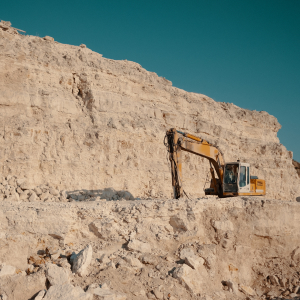
Mining is a process of extracting minerals from underground and mountains. A lot of forest cutting for this process makes the earth go towards land clearing. Many resources are necessary for human life that we discover through mining. Some examples are coal, oil, natural gas, charcoal, etc.
The mining process also leads to an atmospheric disturbance. It can cause the extraction of harmful gases underneath to spread in the environment and impact living beings.
Soil erosion, water pollution, and changes to the water cycle are included as part of atmospheric disruption. The same goes for mining operations; they can contaminate the water supplies by mining through water paths that are beneath the soil. It has the ability to influence the ecosystem’s health and biodiversity, which might ruin the habitat.
Agricultural Expansion
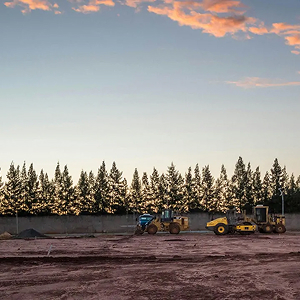
With the time it takes for land agriculture and raising livestock to increase it leads the earth to a high extraction of plants on the earth. The world is growing in population, and agricultural expansion through deforestation is driving the rising use of dietary products and crops.
The palm oil, coffee, and soybean (cash crops) fields are usually cleared of extensive areas of the forest. These crops are useful for producing cosmetics, food, and even other biofuel products. In numerous areas, cattle farming is another cause of vast forest clearance, particularly in the Amazon jungle.
Huge expanses are opened up to pastureland, which destroys the water cycle through deforestation effects. Tube wells are used for agriculture, which leads to the waste of large volumes of freshwater for agricultural uses. Alternative freshwater should be used for crops, as the soil and plant roots filter water to enter the stems for growth.
How Forest Destruction Declines Aquatic Ecosystems?
The effects of deforestation will not only have terrestrial outcomes, but it is also detrimental to the aquatic ecosystem. The protective layer also gets removed with the removal of forests. This maintains the water temperature to a certain range, preventing sediment from going into the waterways. This is the process that will bring on negative implications to the lakes, rivers, and wetlands, while damaging the aquatic habitats.
The main effect it has is the high rise in water temperature. The thing by which the water bodies stay cool is the shade provided by the vegetation and trees. Cutting down the trees will make it easy for the sunlight to fall directly on the surface of waterbodies, bringing a rise in their temperature. It becomes difficult for the fish and other aquatic species to survive because of the warmer water.
Since warmer water has lower oxygen capacity. Thus, a decline in biodiversity is possible to happen and the fish species would either die or leave. Therefore, the more there is this removal of trees then the more soil and debris will wash into the water bodies.
The pollution that causes the water to turn muddy is called sediment pollution. This type of pollution reduces the amount of sunlight for the plants under the water(aquatic plants). This impacts the entire food chain of aquatic species because of decreased photosynthesis caused due to the sediment pollution. Excess sediment can also bury fish eggs and destroy breeding grounds, further disturbing the life cycles of aquatic species.
Cloud Formation and Global Precipitation Disruptions
Forests are extensive transpiration processors that form rain clouds. If trees are transpiring water vapor into the atmosphere, it forms clouds and eventually rains. Widespread forest destruction decreases this input of moisture, which upsets precipitation.
One of the alarming examples would be of the Amazonian rainforest, also known as “the lungs of the Earth.” Amazonia is a type of rainforest system that is important in producing the precipitation for them. But somehow, forest clearance threatens that cycle. Research shows that the Amazon is producing less rainfall in its nearby areas because of deforestation by raising the risk for droughts to take place. While affecting the agricultural output.
These changes reach beyond specific local regions. Giant rainforests also release cloudy, moist air that travels long distances before losing its water in the rain, affecting precipitation patterns across the world. Disruptions in one place on the globe can cause unexpected drought or excessive rainfall in another. It shows how interconnected the Earth’s climate system.
Aftermath of Temperature Rises
Land clearing drastically changes microclimates – the climatic conditions in a given area. The loss of trees generally increases local temperatures, a phenomenon often called ‘the heat island effect.’ Without trees to cover the ground, heat absorption by the earth and nearby structures increases, leading to an overall temperature rise.
This is a major issue for rural communities that depend on agriculture. Warmer temperatures and less rain mean that soil moisture is reduced, and with it, the ability to grow crops. This causes food scarcity and economic challenges, which causes many people to leave in search of better living conditions.
Tree clearing also makes extreme weather events more frequent. The destruction of trees leaves the land without a nature-based cushion against storms and flooding. Instead, heavy rains typically absorbed by the forest floor rush over bare land, triggering flash floods that can devastate communities and infrastructure.
Forest Clearance and Barren Soil Mindset
The trees are considered to be the helpers of groundwater, playing a significant role in this matter. Even in droughts, the tree roots allow the water to filter into these underground reservoirs. It acts as a constant source of water. When there is no forest for soaking up the rainwater, instead of going underground, it flows over the surface. Eventually, this means that less amount of water reaches the underground reserves.
The areas include both urban and rural who depend on the groundwater for purposes like drinking, industrial use, and irrigation. Both areas are impacted. You’ll witness that many areas that were once cleared throughout history are the ones now struggling for water.
Groundwater hectares are declining rapidly and are widespread in countries like Brazil and India. The reason for the decline may be due to the changes in the hydrological cycle taking place only because of deforestation.
Solutions to Combat Forest Clearance and Preserve the Hydrological Cycle
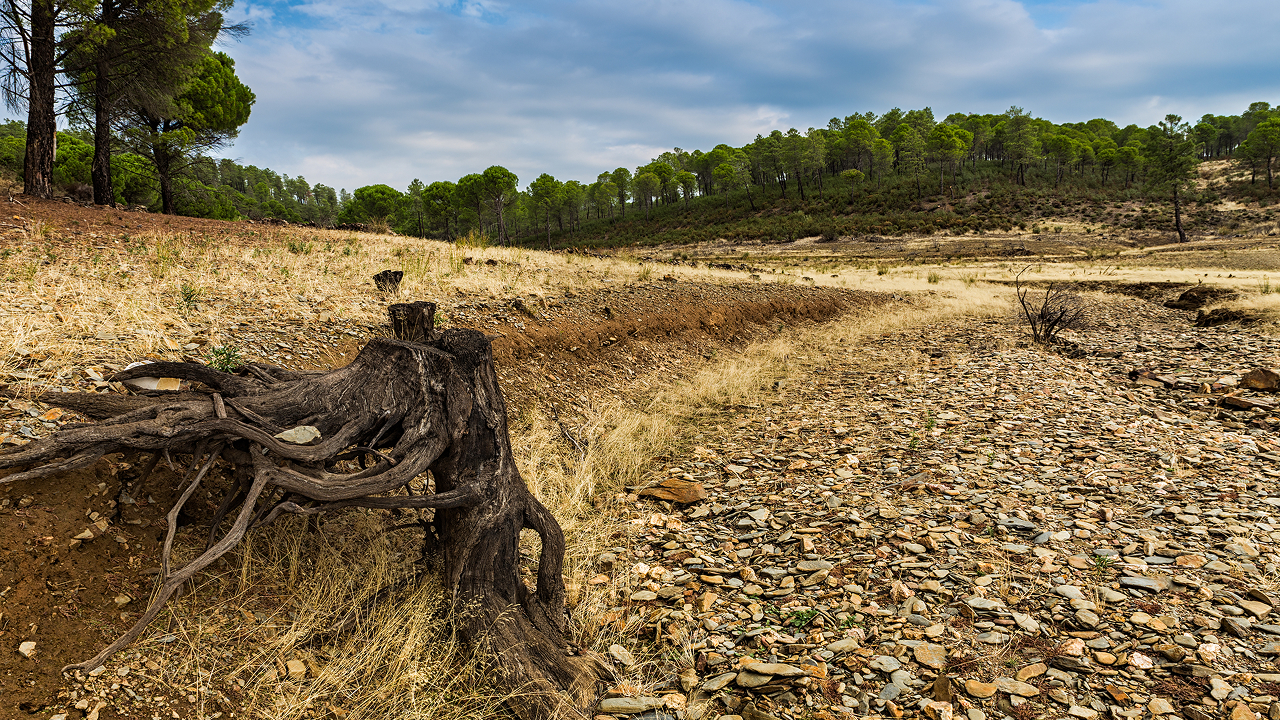
Land clearing poses serious threats. For that, there are solutions that help lessen its consequences. Here they are:
Afforestation and Reforestation
If we plant trees in a deforested area, it will bring back the ecosystems and revitalize the circulation of water. The Great Green Wall in Africa is one of the projects of massive-scale tree-planting. These projects have demonstrated real promise in the reversal of desertification. It also enhances the soil’s water-holding capacity.
Implementing Practices In Agriculture
One practice promoting agroforestry is planting trees with the crops, which will not only preserve the moisture but also help to prevent erosion. There are sustainable agriculture farming methods, such as crop rotation and lower pesticide use, helping to minimize the need for forest clearance.
Stricter Forest Conservation Policies
The stricter policies should be taken into consideration by the government to stop illegal logging while promoting sustainable land use. If effectively protected, national parks and community-managed forests can act as refuges against deforestation.
Agroforestry for Water Management
The water retention present in the soil is enhanced by planting the trees alongside the crops. Also, it reduces the runoff. Certain modes of technology can create a huge difference that including drip irrigation and rainwater harvesting technology.
Indigenous Leaders and Issues
The indigenous communities act as the forest and water resource stewards, while the Amazonian tribes help in the protection of their habitat. By giving legal rights to these groups, drop a decrease in the destruction of forests. It tends to enable sustainable forest management on a grand scale.
Final Thoughts
Deforestation affect the water cycle and has intricate and extensive effects. In addition to lowering rainfall and increasing soil erosion, land clearing changes entire ecosystems, both terrestrial and aquatic. It alters weather patterns locally and globally, making certain regions more susceptible to droughts and bringing heavy rain elsewhere.
This understanding is critical to making informed decisions about land use, conservation, and management strategies. The battle against tree removal is not only about saving trees – it’s about saving water, climate stability, biodiversity, and the livelihoods of humans.
By implementing a combination of policy reforms, sustainable practices, and community-based engagement, we can strive towards a future where forests flourish and the hydrological cycle is in equilibrium. By realizing and describing the connection between deforestation affect the water cycle, we can work together for the safety of humans. It is just to secure and save the future of the next generations on Earth.
